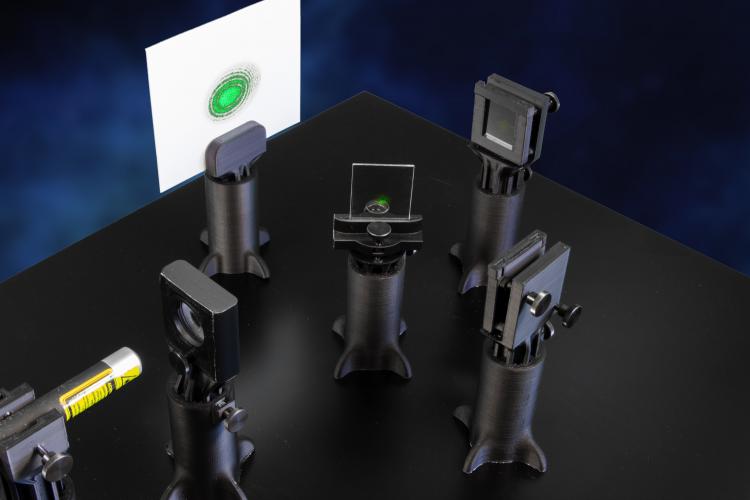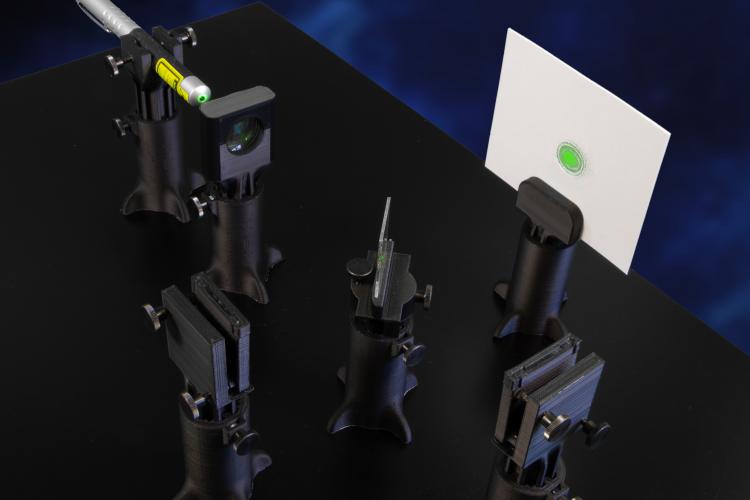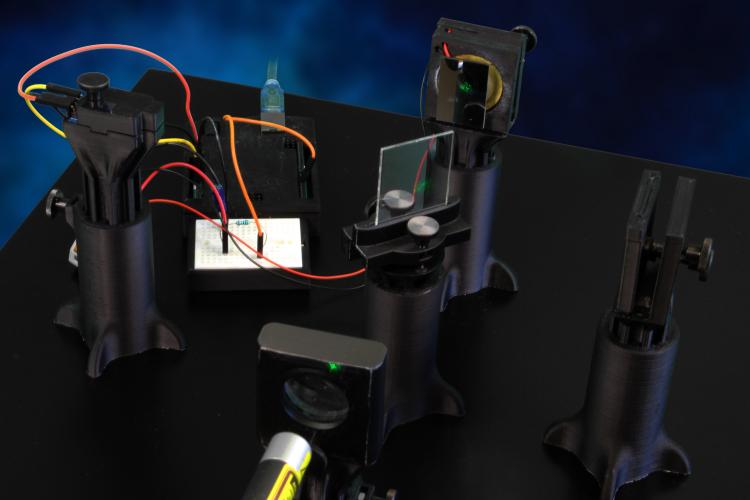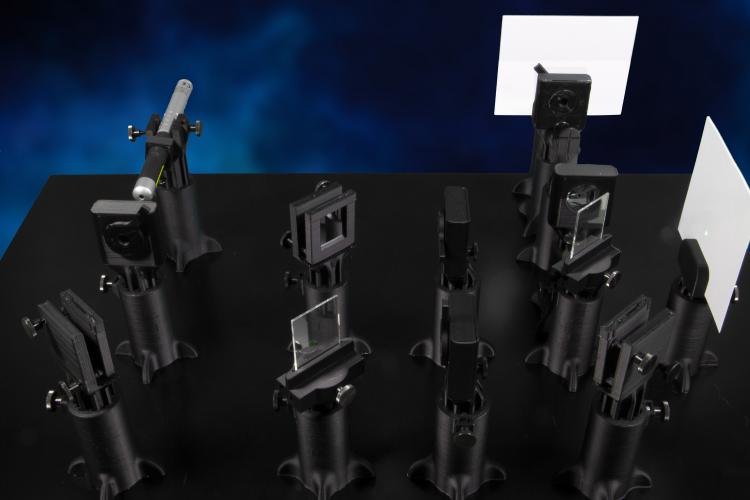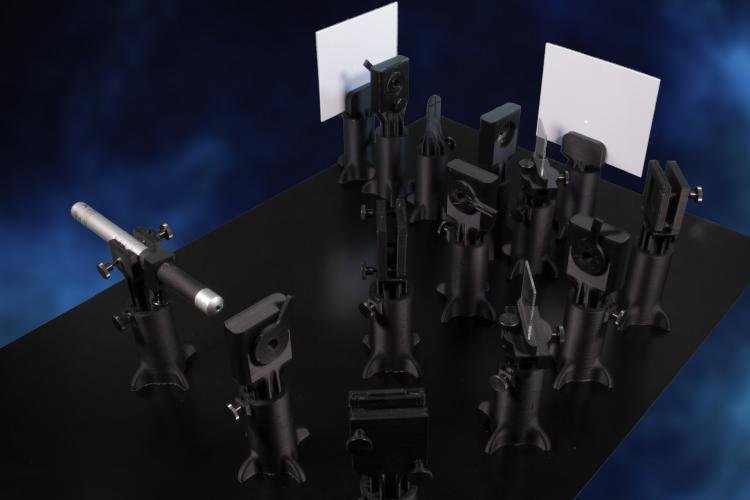3D printed Laserlab
3D-printable Laserlab
Space, time, and matter are among the most fundamental concepts we rely on for structuring our understanding of the surrounding world. In the past, fundamental research has made the most astonishing discoveries on the nature of these and has shown that our everyday understanding cannot be quite right.
Many times, advances in our understanding are closely tied to sophisticated experiments, which are, however, often not easily accessible to a broader public. Now, with the growing popularity of 3D printers, many of those experiments can indeed be conducted at home, on your very desk.
Scope of the project
In this line of reasoning, this project proposes a Do-it-yourself 3D printed Laserlab, which allows for hands-on experimentation in the realms of Special Relativity and General Relativity as well as Quantum Physics. Technically, the Laserlab consists of 3D-printed optical mounts that are complemented by inexpensive components such as screws, magnets, or mirrors. Once assembled, they serve as building bricks for experimental setups, very much like those you would find in a professional photonics laboratory (but for a fraction of the cost).
What you can build
At its heart, the Laserlab is a photonics lab that allows building various interferometry setups, such as a Michelson-Interferometer, a Mach-Zehnder Interferometer, or a Quantum Eraser.
Currently, three major experiments are proposed (but you are free to also devise your own):
- Special Relativity: Set up a Michelson-Interferometer and test the fundamental hypothesis of Special Relativity: the invariance of the speed of light. This idea is at the core of highly counterintuitive phenomena such as time dilation or length contraction.
- General Relativity: It’s only very recently that gravitational waves have been observed by gravitational wave detectors such as LIGO or Virgo. In essence, gravitational wave detectors are Michelson-Interferometers, which have been enhanced to greatly increase their sensitivity. Gravitational waves passing through these detectors will result in changing optical path lengths in the interferometer’s cavities and hence shifting interference patterns. The 3D printed Laserlab features a piezo-driven mirror that can be moved in the order of some 100 nanometers (ten-thousandth of a millimeter). This makes it possible to simulate the effect of gravitational waves and thus gain a better understanding of what is happening in large gravitational waves detectors.
- Quantum Physics: The Quantum World often seems very strange to the point of being barely comprehensible from a common-sense point of view. One of the stranger features is what happens during measurement and how the measurement itself affects what is being measured. A well-known experiment to explore the subtleties of Quantum Physics is the so-called “Quantum Eraser.” With the Laserlab, you can build one and explore the Quantum World for yourself.
Getting started
- Download the manual and the required .stl files.
- Download the provided Arduino sketch.
- Choose which experiment you would like to build.
- 3D print the mounts you’ll need according to the specifications in the manual.
- Order screws, magnets, a steel base plate, and optical components from your favorite supplier.
- Assemble the lab and set up the experiment.
- Explore!
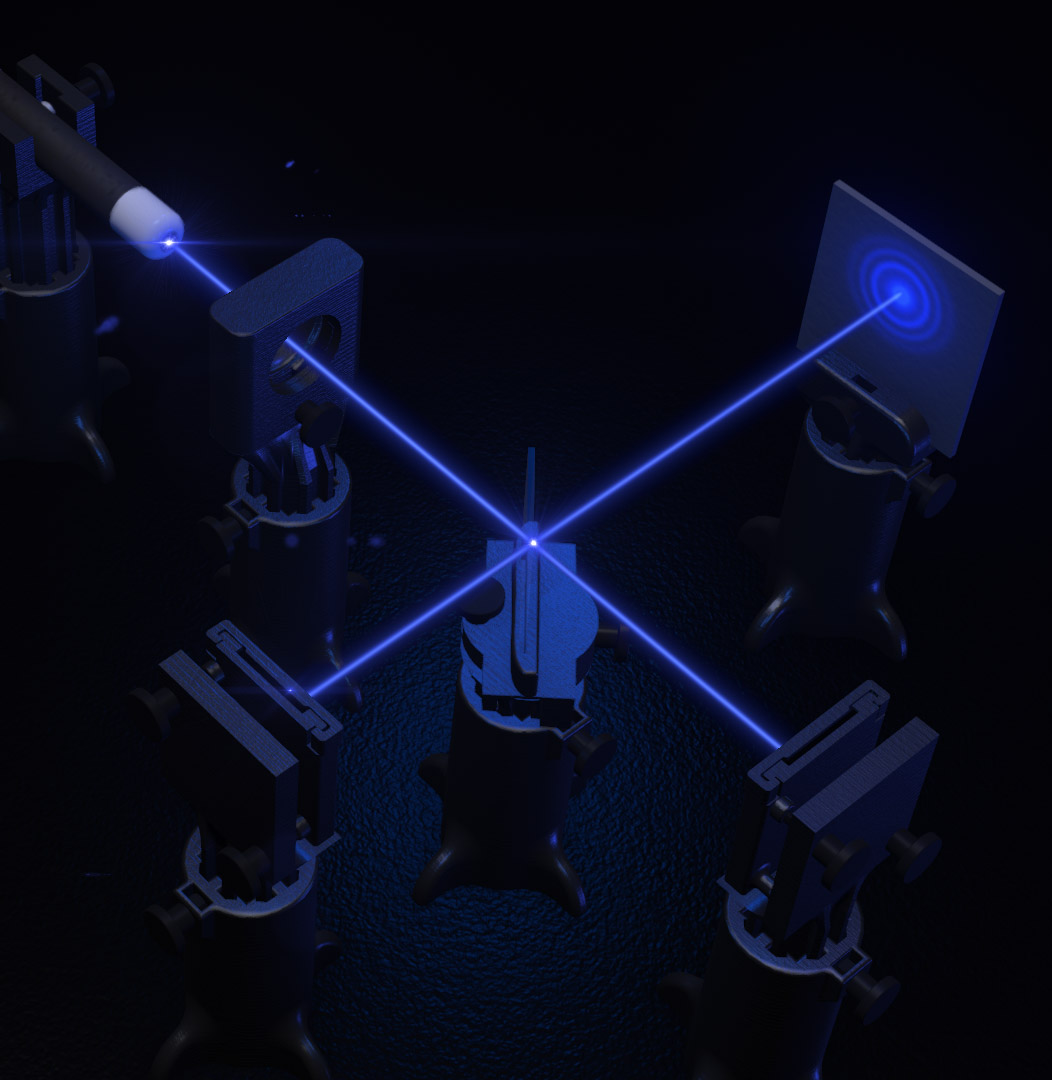
Ever dreamed about 3D-printing your very own laser lab? Now you can! Print yours today and start exploring core ideas of special relativity, general relativity and quantum physics: https://t.co/W5Y7ortPv4 pic.twitter.com/gRDBZ0D62z
— CERN (@CERN) July 8, 2020
